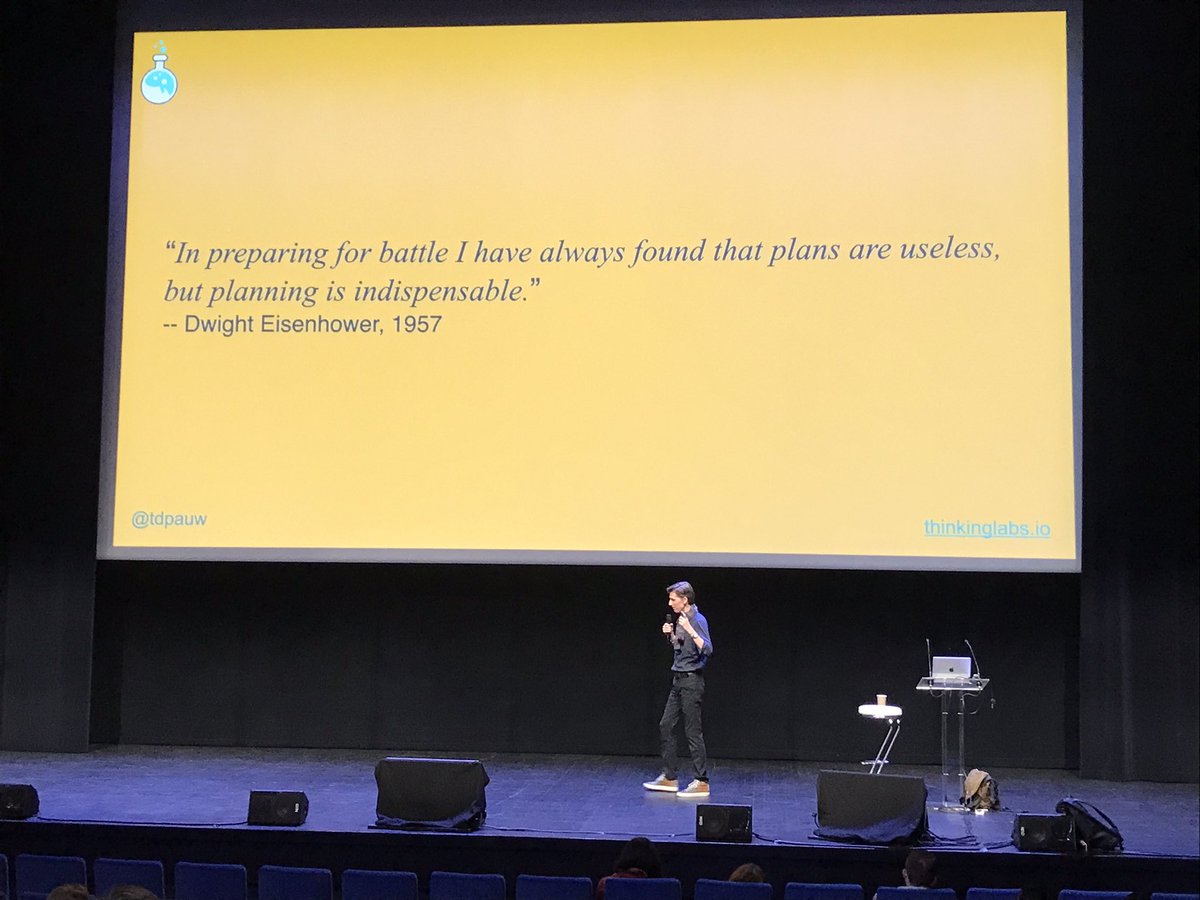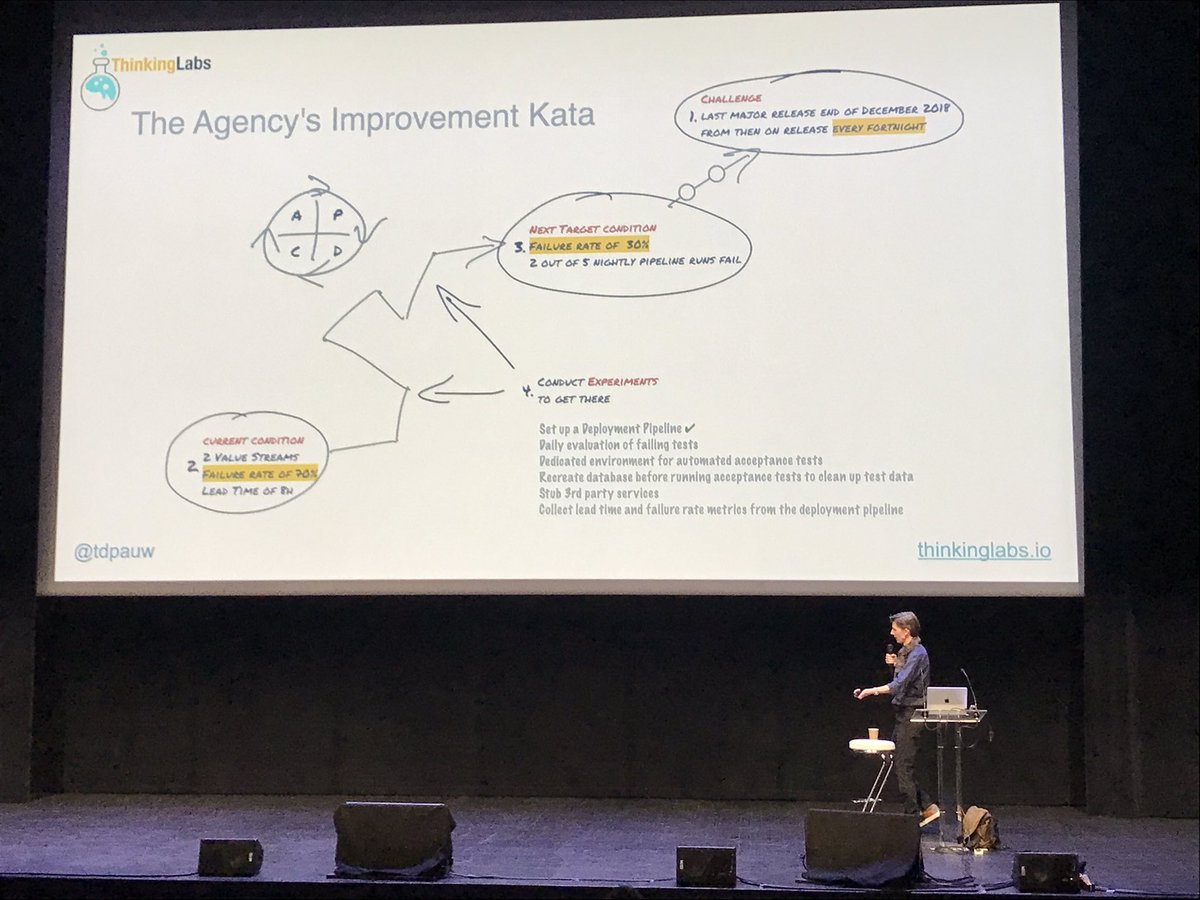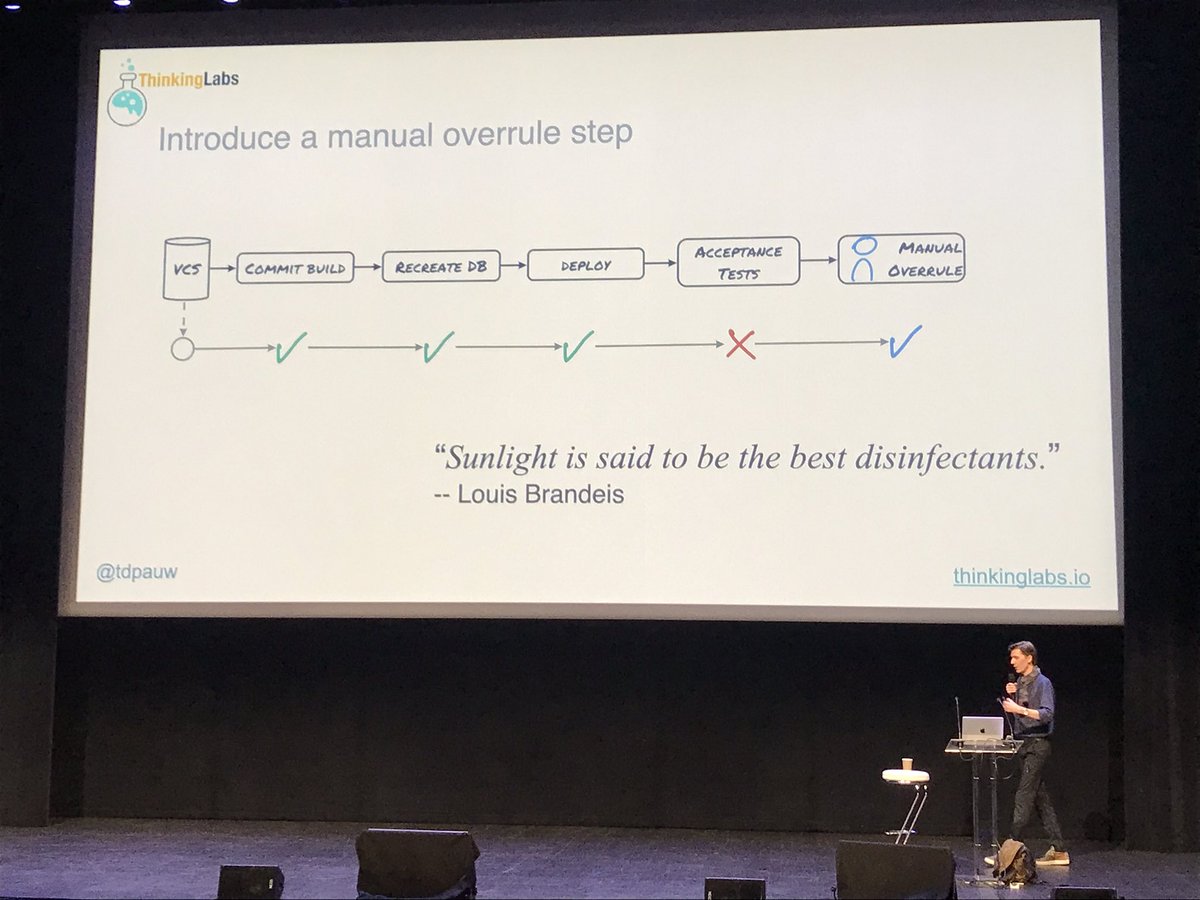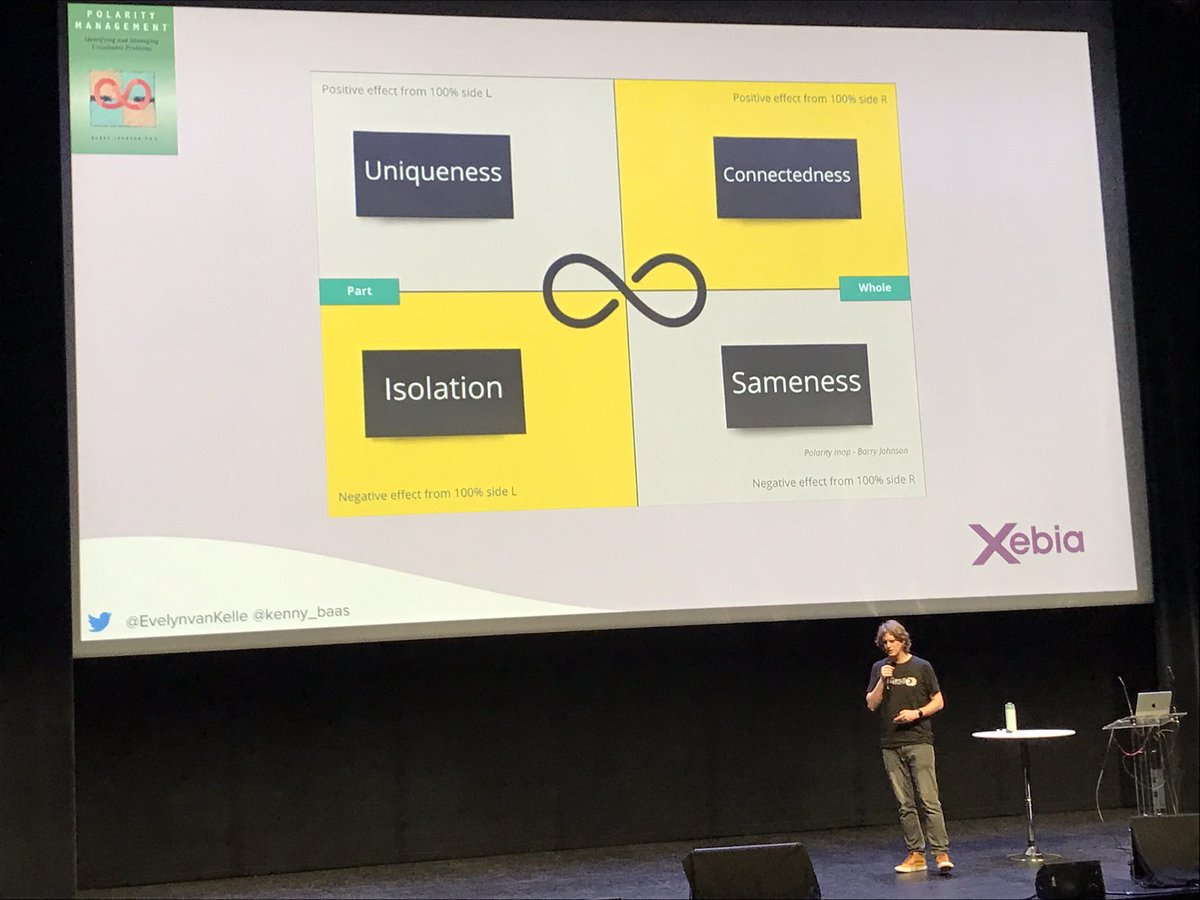
How do you move an organisation of 15 teams and their single shared monolith from bi-annual releases to fortnightly releases in under four months? How do you reduce release pain and cost?
Follow this talk by @tdpauw to find out 😉
Follow this talk by @tdpauw to find out 😉

This agency addressing the full Belgian population used to freeze code to release 2 or 3 major releases per year, and (of course) many hot bug fixes were still needed each time. 

In Sept. 2018, they asked @tdpauw to change the 15 teams and their single shared monolith to fortnightly releases by December.
What he didn’t want to do was applying a maturity model, since they are flawed.
What he didn’t want to do was applying a maturity model, since they are flawed.

These were the tools he intended to use instead. #flowcon 

First, he established a core team representing all roles to lead the Continuous Delivery adoption (20 volunteers).
Investing in CD is very valuable–but it isn’t easy nor cheap!
It’s more about quality and stability before speed, which is a consequence. This implies #change.
Investing in CD is very valuable–but it isn’t easy nor cheap!
It’s more about quality and stability before speed, which is a consequence. This implies #change.
Technological changes of course but, more importantly, organisational changes–which are harder and take longer.
Where do we start? 🤯
Where do we start? 🤯

Start setting a goal, a direction.
Analyze the current conditions and data.
Establish your next target conditions.
And conduct experiments to get there (analyse results: keep if useful, discard if not, repeat).
Analyze the current conditions and data.
Establish your next target conditions.
And conduct experiments to get there (analyse results: keep if useful, discard if not, repeat).
This org assessed their current situation with a process of iterative value stream mapping.
Feature value stream was very different from patch value stream –an anti-pattern but still useful in this case. It revealed a more effective process already in place in the org.

Feature value stream was very different from patch value stream –an anti-pattern but still useful in this case. It revealed a more effective process already in place in the org.


Then the theory of constraints came in handy. Thierry asked people where they thought the bottleneck could be. 





Despite everything, the major release was done in December.
From then on, the fortnightly releases happened.
It is possible to achieve CD without first reaching CI.
From then on, the fortnightly releases happened.
It is possible to achieve CD without first reaching CI.
The core team used the organisation’s inertia to their advantage. Once dashboards were in place with the right metrics, IT management got more and more interested and started investing more in this evolution. #flowcon
• • •
Missing some Tweet in this thread? You can try to
force a refresh
































